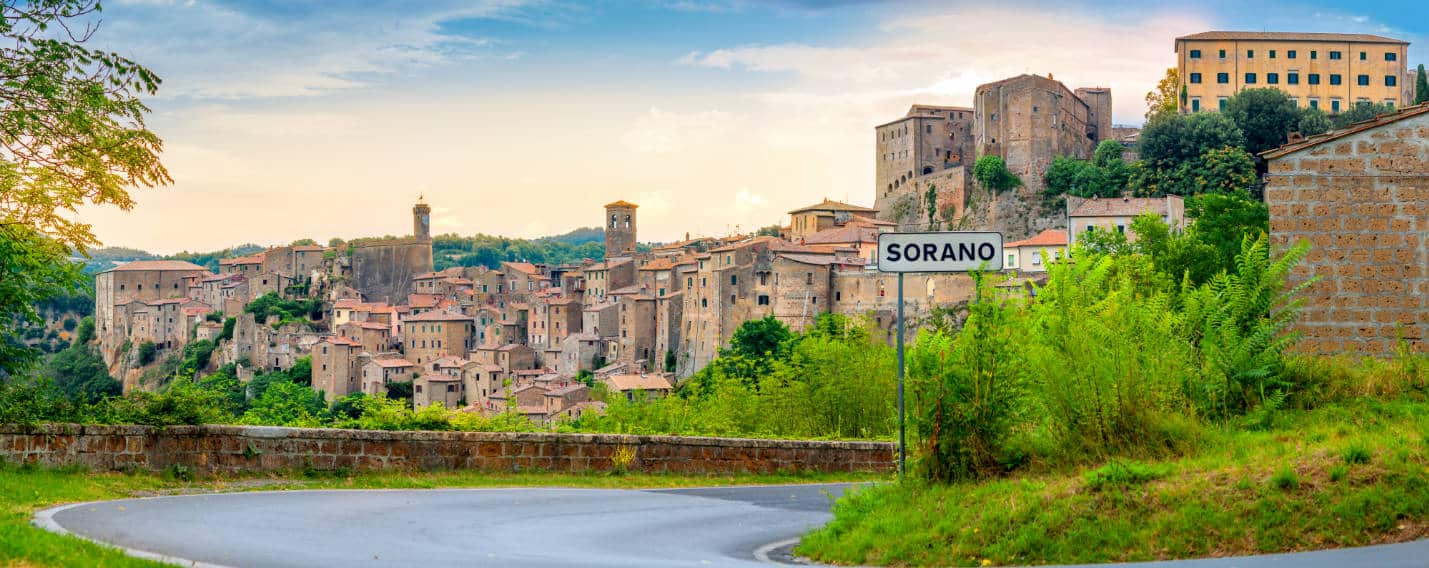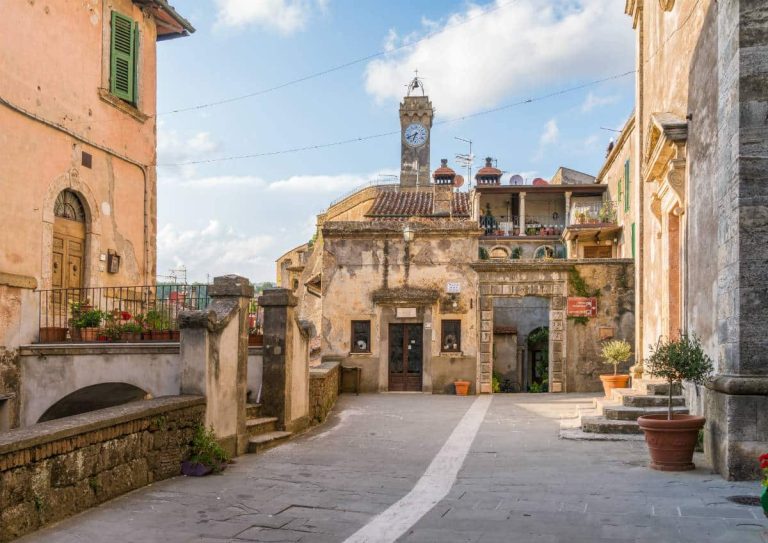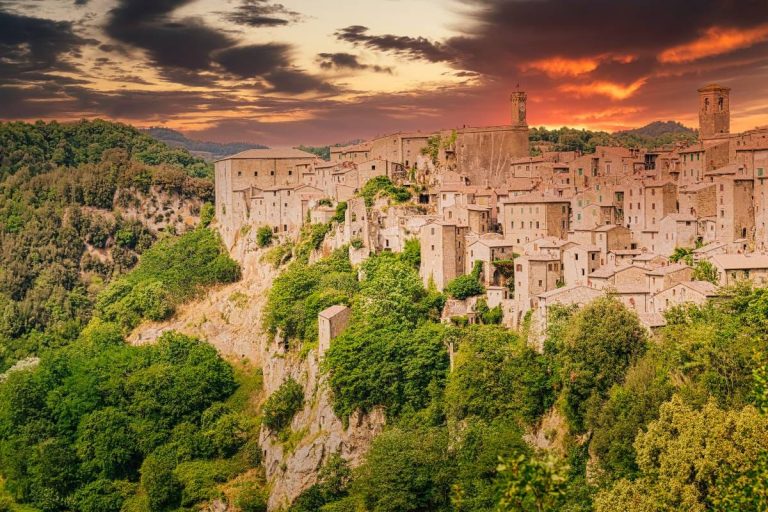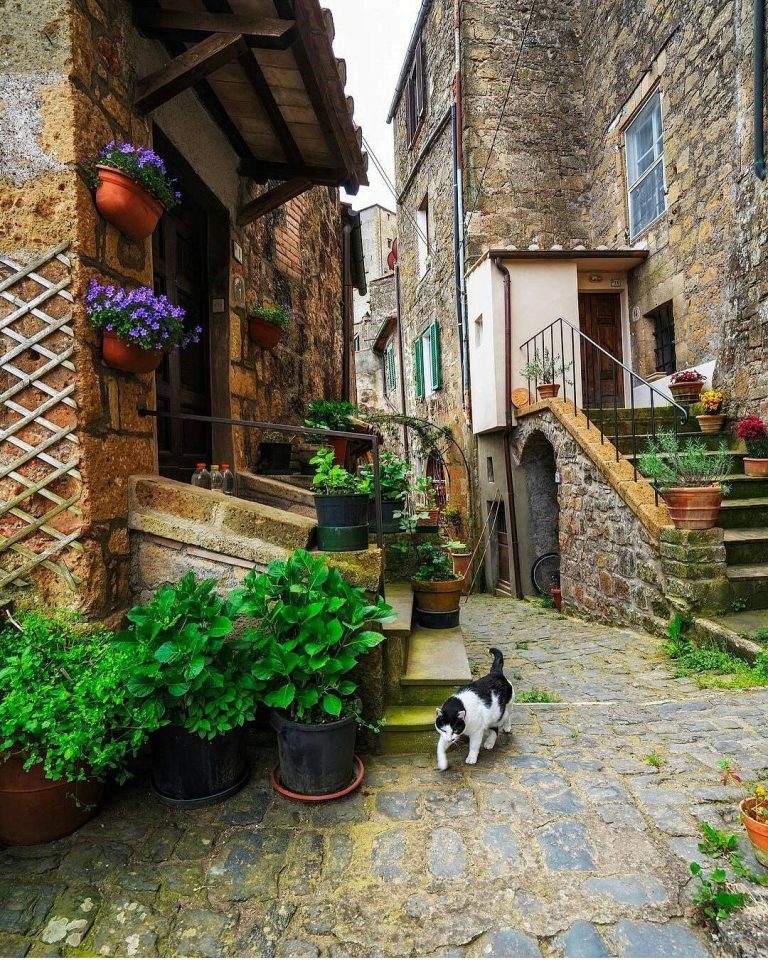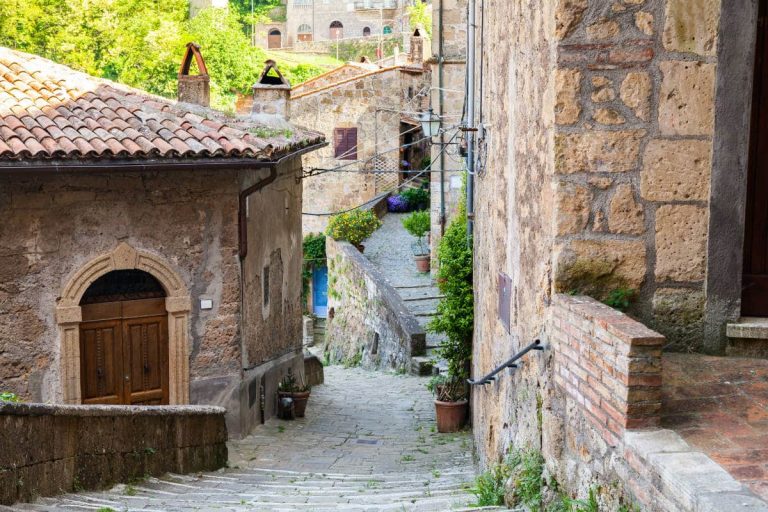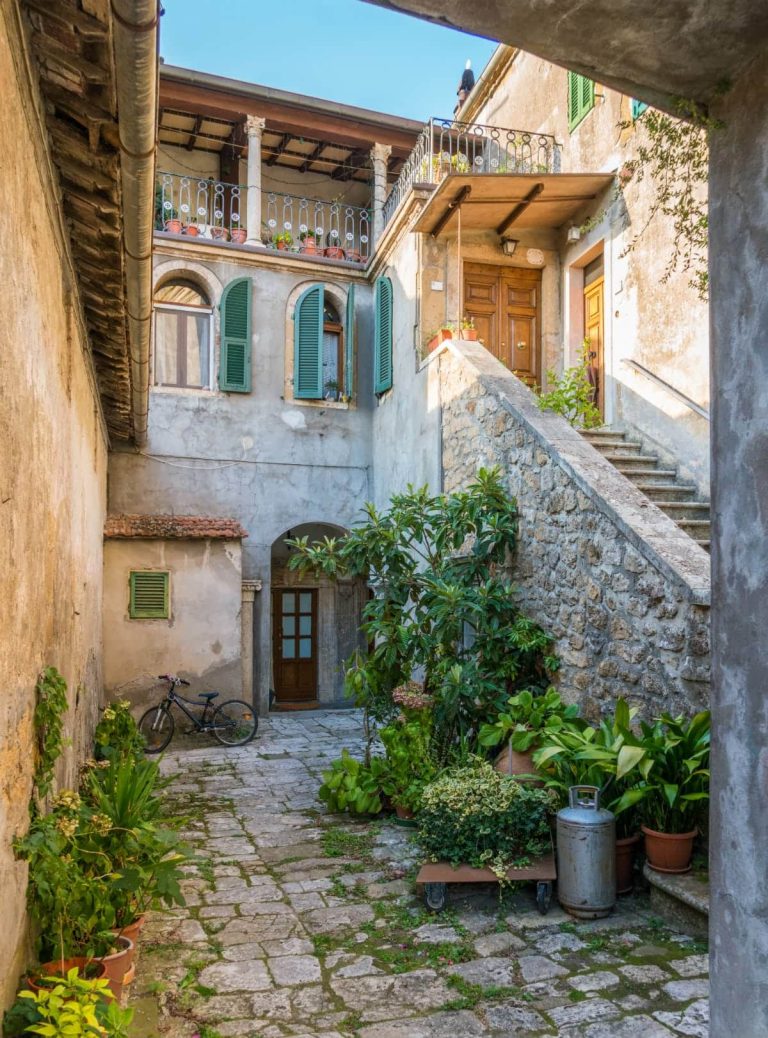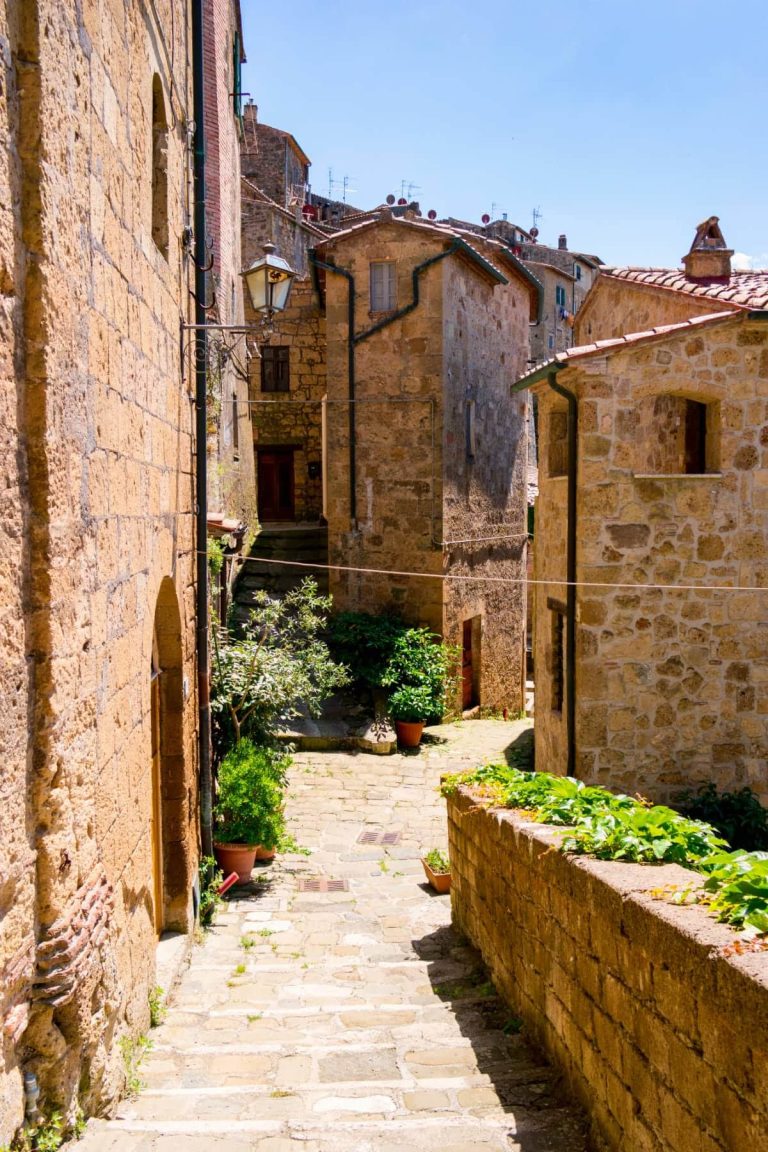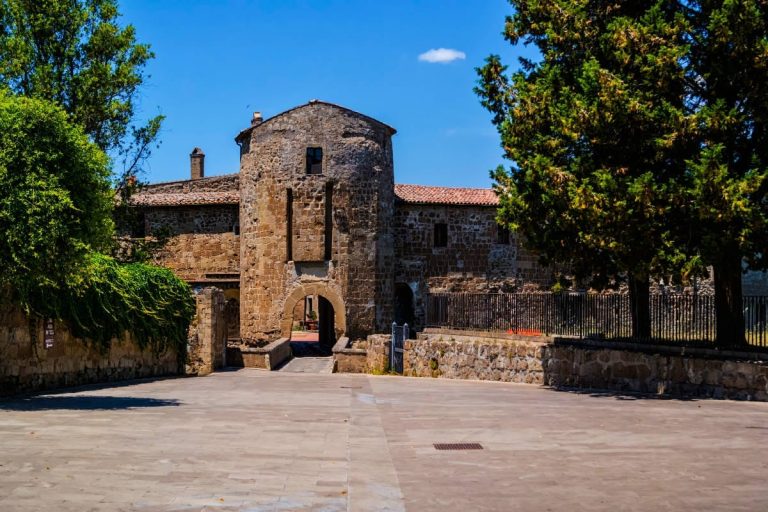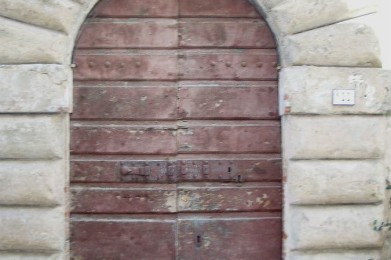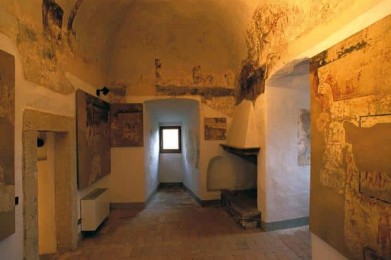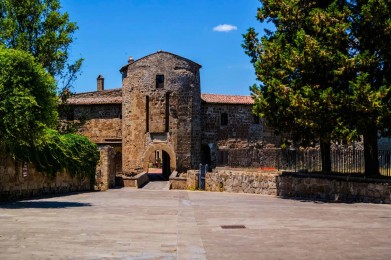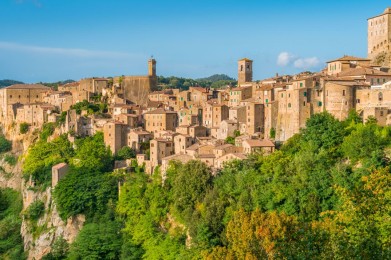Sorano was born as an ancient estate of the Aldobrandeschi family, but the municipal territory was already inhabited since the Etruscan period, as demonstrated by the remarkable discoveries of settlements and ancient necropolis. After the marriage between Anastasia, the last heir of the Aldobrandeschi, and Romano Orsini in 1293, control of Sorano passed to the Orsini family. The center followed the vicissitudes of history and policies of the nearby Pitigliano, where it was located the residence of the counts, and the Orsini undertook to boost it fornendolo of effective fortifications, which rendered Sorano a safe haven from attacks enemies: several times in fact, in the course of the XV century, the Sienese posero the fortress of Sorano under siege, succeeding to occupy it only in 1417. In 1556, Sorano passed into the hands of the Medici who inglobarono in the Grand Duchy of Tuscany together with the nearby Pitigliano.
The village still preserves the Jewish Ghetto along the homonymous track, where he was also attested to the presence of the Synagogue and of the oven of the unleavened breads. Another synagogue, now transformed by the municipal administration locally for exhibitions, would have been identified along the "via Selvi" and dates back to periods prior to the imposition of the ghetto itself as the Jewish settlement would be prior to the latter at least 50/60 years. The ghetto was established by doctors in 1619 after it was carried out the exchange of territories of the county of Pitigliano and Sorano with those of the county of Monte San Savino between the Orsini family and the doctors themselves. The Jewish community abandoned Sorano in the early twentieth century.
After the last World War the ghetto of Sorano departed to a phase of degradation without precedent that reached its culmination and total abandonment to the early nineties. It was in that period that, thanks to a targeted action of the Municipal Administration of the epoch, was initiated a reversal of the trend that led to the involvement of private economic operators, which effettuarono a careful restoration and upgrading of all buildings of the ghetto, returning it to its ancient vestiges. Some signs that recall the presence of the Jewish community in Sorano are visible on the doors of the gate of the entrance of the building that houses the Hotel "Locanda Aldobrandeschi", to the side of which there is still an ancient structure that was used for the storage of grain as a guarantee in the so-called "loan to wheat". At the entrance of the ghetto there are also still visible signs of the hinges where revolved the gate that closed the ghetto itself at dusk to then be reopened the next morning.
Sorano is perched so picturesque on a steep tufaceous cliff that has various inclines. The village is also characterized by a maze of alleys, courtyards, arches, portals ashlar work, external stairs, loggias and cellars dug into the tufa where in the past were performed on the various phases of the harvest. Around the historical center, Sorano owns a small urban area, developed in an orderly manner from the sixties of the twentieth century thanks to urban interventions regulators. From the point of view of urban architecture indicates the Zone 167, made of tufa and commonly known with the name of New Houses, attempt to merge contemporary architecture and modern needs with the environment of tuff rock and an ancient context now consolidated: the district was built between 1969 and 1976 on behalf of I.A.C.P. of Grosseto, on a project by Lanfranco Welcome, Paolo Borghi and Luigi Rafanelli; among the buildings of major importance is the condomino-tower of viale Brigate Partigiane, as the most representative among the modern architectures that form the skyline of Sorano.

